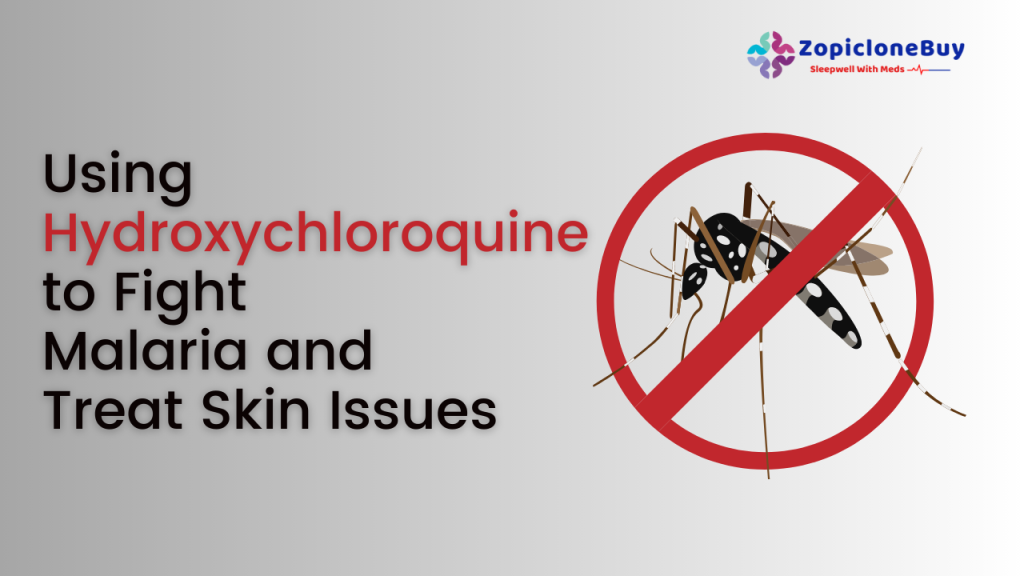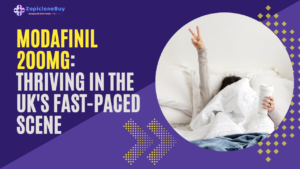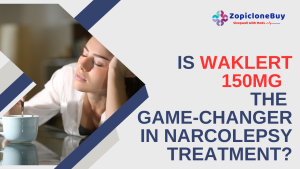Introduction
Since its introduction as a modified version of Quinine, Hydroxychloroquine has been popular because of its multiple modes of effectiveness in the body. Developed initially as a DMARDS for Rheumatoid arthritis, its popularity accelerated when researchers observed its efficacy as an antimalarial and treating autoimmune and skin diseases. Hydroxychloroquine 200 mg is an effective treatment option for viral infections and has been in the news for its therapeutic properties since the onset of the 2020 pandemic. Because of its varied effectiveness, the drug has been FDA-approved for malaria and lupus and is on the WHO list of essential medicines.
Hydroxychloroquine 200mg for malaria
Malaria is a severe disease that can cause serious morbidity and even mortality if not treated promptly. Antimalarials though effective to some extent, face a severe resistance issue from malaria-causing parasites, especially P.Falciparum and P.Vivax species. Additionally, they do not work on all individuals and, in a few cases, even lead to symptoms of toxicity. Initially, Chloroquine was determined the best treatment for malaria and considered the mainstay of malaria treatment and chemoprophylaxis. But it had a low margin of safety and proved dangerous for children in increased doses, because of which Hydroxychloroquine 200 mg was developed as a second-generation antimalarial with a safer profile than potent medicines like Chloroquine and Quinacrine.
According to the Treatment of Malaria Guideline from WHO and Centers for Disease Control and Prevention, Chloroquine and Hydroxychloroquine are effective against uncomplicated P.Vivax, P. Malaria, P.ovale, and P. Knowlesi Malaria. And effective against P.Vivax and P.Ovale malaria and pregnant and breastfeeding women as chemoprophylaxis while traveling.
But Hydroxychloroquine is more clinically efficient than Chloroquine and has better tolerability. It has a longer mean residence time of 1300 hours compared to 900 hours of Chloroquine, an improved efficiency rate of destroying the malarial parasite. Compared to Chloroquine’s anti-inflammatory and anti-cytokine effects, Hydroxychloroquine has an added immunomodulatory capacity with autoimmunity. It can delay and prevent organ damage, including bone destruction, and has an antithrombotic ability. It is threefold less toxic than Chloroquine, especially in complications like Retinopathy. The risk of developing Keratopathy is significantly less ( 40 times ) with Hydroxychloroquine. Even patients unable to take Chloroquine have been observed to tolerate Hydroxychloroquine well.
Besides Chloroquine, Hydroxychloroquine has shown improved effectiveness against another effective Quinacrine, an antimalarial antibiotic used to treat Giardiasis and malaria. Quinacrine, despite its efficacy, cannot be used in glucose-6-phosphate dehydrogenase deficient individuals as it can result in hemolysis ( destruction of red blood cells). Additionally, when used long-term, Quinacrine tends to cause aplastic anaemia and cerebral damage. Hydroxychloroquine, in comparison, has a safer profile, less incidence of side effects, and long-term usage safety.
It even works on the skin.
Lupus Erythematosus is an autoimmune skin condition in which the body’s immune system attacks the skin, resulting in inflammatory lesions in the form of butterfly rashes in the facial regions with red and discoloured rashes in other parts of the body.

Image Credit – https://jamanetwork.com/journals/jamadermatology/fullarticle/1843885
Hydroxychloroquine is regarded as the first line of treatment in Lupus Erythematosus for reducing inflammation and providing symptomatic relief. There are several ways through which it exerts its therapeutic effects, out of which the chief methods are
- Inhibiting proinflammatory receptors like TLR-7 and TLR-9 that mediate anti-DNA antibody production or are overexpressed accelerate the progression of lupus over the skin
- Inhibiting cyclic GMP-AMP synthase activity, an upregulation in the pathway of which causes lupus erythematosus and kidney hypertrophy.
- Inhibiting Autophagy is a process by which a cell breaks down old, damaged and abnormal proteins, and that is increased in B cells and T cells in human SLE.
- Inhibiting inflammatory cytokine production and antigen production that are erroneously circulated in SLE patients
- It even exerts its photoprotective effects, absorbs UV radiation, decreases the expression of proinflammatory cytokines, and reduces inflammation-causing human leukocyte antigens.
- Its antioxidant and anti-infective properties increase the pH of intracellular organisms and prevent them from invading the skin.

In a systematic review of the English Literature conducted for trials of Hydroxychloroquine, almost 95 articles with high levels of evidence confirmed the effectiveness of Hydroxychloroquine for SLE. These studies showed that Hydroxychloroquine was more effective than other antimalarials in preventing lupus flares and improving the long-term survival rates of patients dealing with autoimmune skin conditions. It even helped deal with the comorbid symptoms of lupus, like bone mass loss and thrombosis. Additionally, it had a safe profile.
Even pregnant women with lupus flares could use it safely without compromising the fetus’s or the baby’s safety. Very few papers indicated contraindications or contrasting impact of Hydroxychloroquine on exaggerating lupus activity. A few papers suggested that while exerting its therapeutic effects, It inhibits the conversion of 25(OH)-vitamin D to 1,25(OH)2-vitamin D, while others demonstrated its anticancerous properties. Overall, the study concluded that it was a safe treatment option for SLE and could even be continued during pregnancy.
Other than systemic lupus, It works on eczema conditions and granulomatous disorders like sarcoidosis and Lupus Miliaris Disseminatus Faciei, giving rise to skin lesions on the face and other areas of the body. Large-scale studies on Hydroxychloroquine have observed it to have a 77.1% response rate to SLE and an 88.7% response rate to skin conditions like Lichen Planus and Lupus Panniculitis.
Hydroxychloroquine role in Covid
Despite its numerous benefits, the role of Hydroxychloroquine in Covid is controversial. During the initial days of the Covid pandemic, a few studies observed the invitro-benefits of Hydroxychloroquine in infected Sars-Covid cells. They reported a reduction in the viral carriage, with 25 out of 31 trial subjects observing an improvement in one of the few small-scale clinical trials. Considering its effectiveness and the desperate situation caused by the pandemic, the FDA, under Emergency Use Authorization, recommended its use at tapering doses while restricting its administration to be limited to 4-7 days. But in the present case scenario, the FDA has withdrawn its Emergency Use and cautions against using Hydroxychloroquine for Covid-19 outside of cynical trials or hospital settings because of the risk of heart rhythm problems associated with its use.
Conclusion
It is a potent antimalarial and highly effective lupus treatment option because of its anti-inflammatory properties. But it should only be used cautiously as misuse or overuse can result in complications like damage to the retina or kidney. Hydroxychloroquine-induced AGEP( Acute Generalised exanthematous pustulosis ) is a drug-related reaction of acute onset of mainly small non-follicular pustules on an erythematous base and spontaneous resolution usually within two weeks.
Hydroxychloroquine-induced AGEP is a rare but severe, extensive, and acute reaction that does not have a specific therapy and takes longer to resolve than other drug-related severities. Withdrawing the drug and correctly diagnosing it can help deal with the symptoms and fix the problem timely. But you should use the medicine as per your physician’s advice and be aware of its safety usage and risks.
https://jamanetwork.com/journals/jamadermatology/fullarticle/1843885
https://www.ncbi.nlm.nih.gov/pmc/articles/PMC7441788/
https://link.springer.com/chapter/10.1007/978-3-642-73772-5_18
https://pubmed.ncbi.nlm.nih.gov/34713476/
https://pubmed.ncbi.nlm.nih.gov/29635998/





